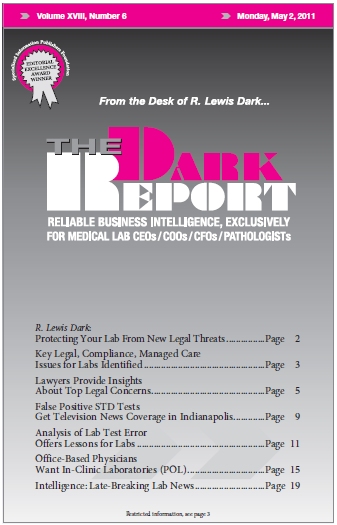CEO SUMMARY: Interest by office-based physicians in creating an in-clinic medical testing laboratory is on the increase. This has direct consequences for independent commercial labs, hospital lab outreach programs, and anatomic pathology groups, since office- based physicians are a primary source of lab test referrals. One consultant says that 60% to 70% of the volume …
Office-Based Physicians Want In-Clinic Laboratories Read More »
To access this post, you must purchase The Dark Report.


